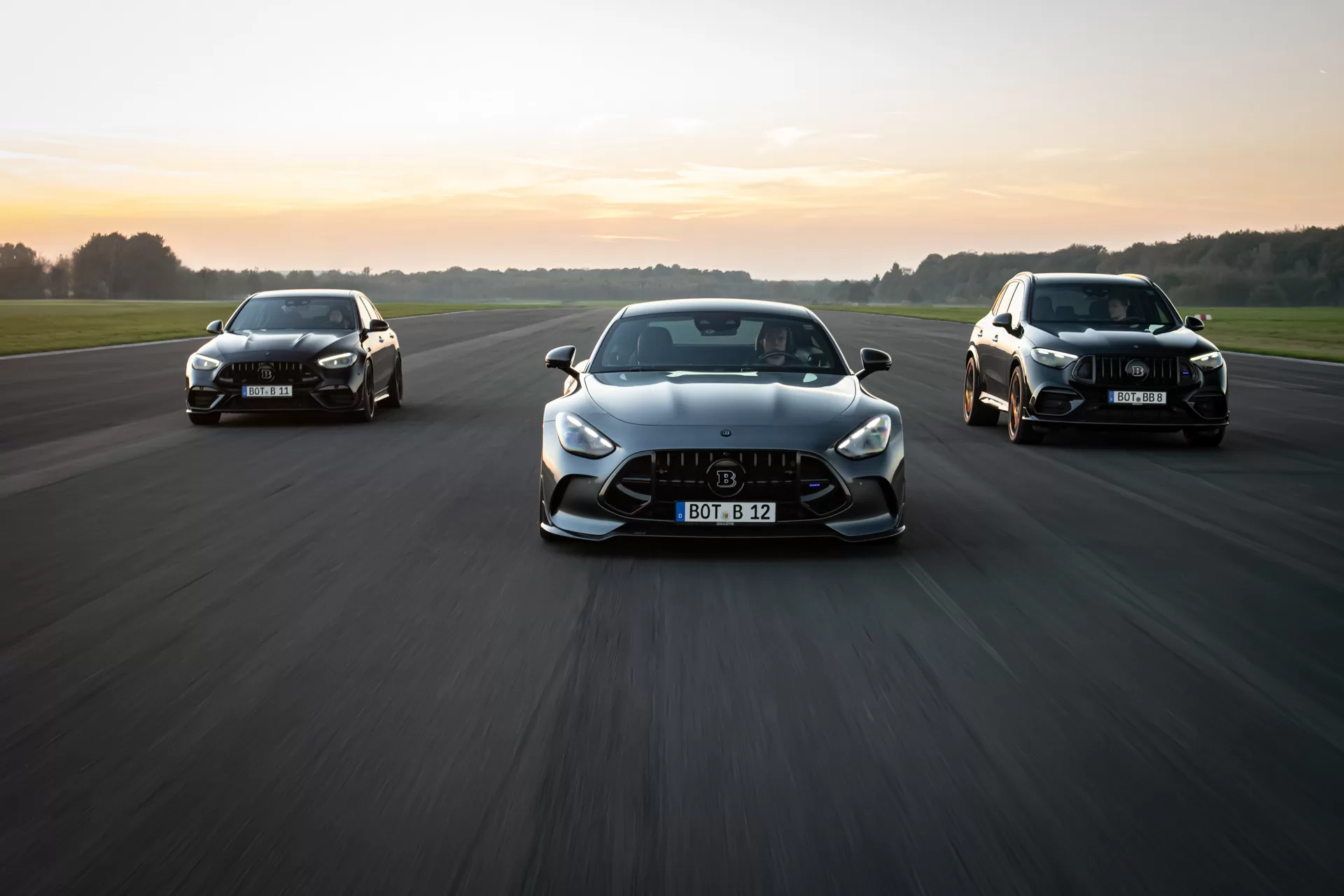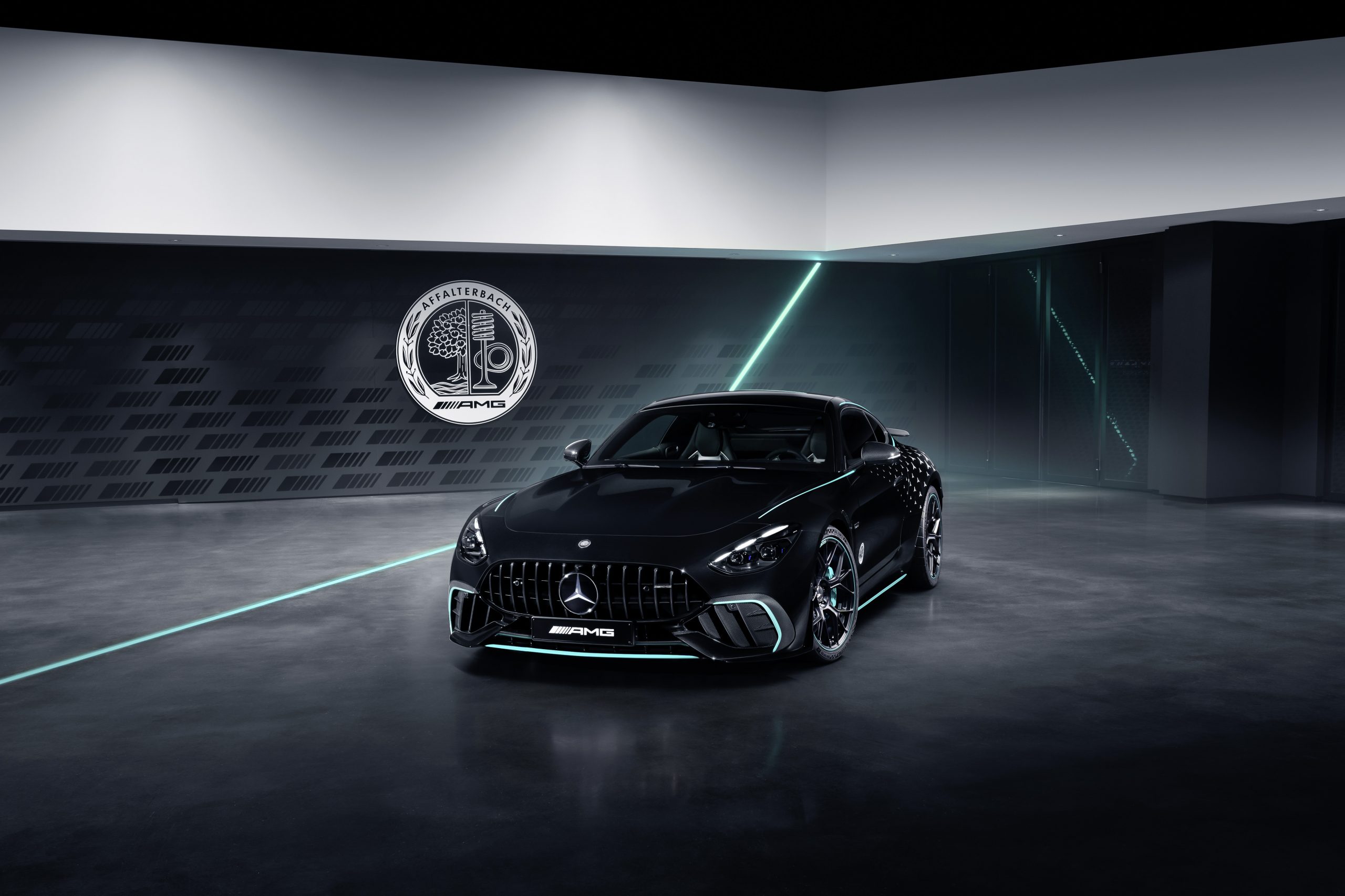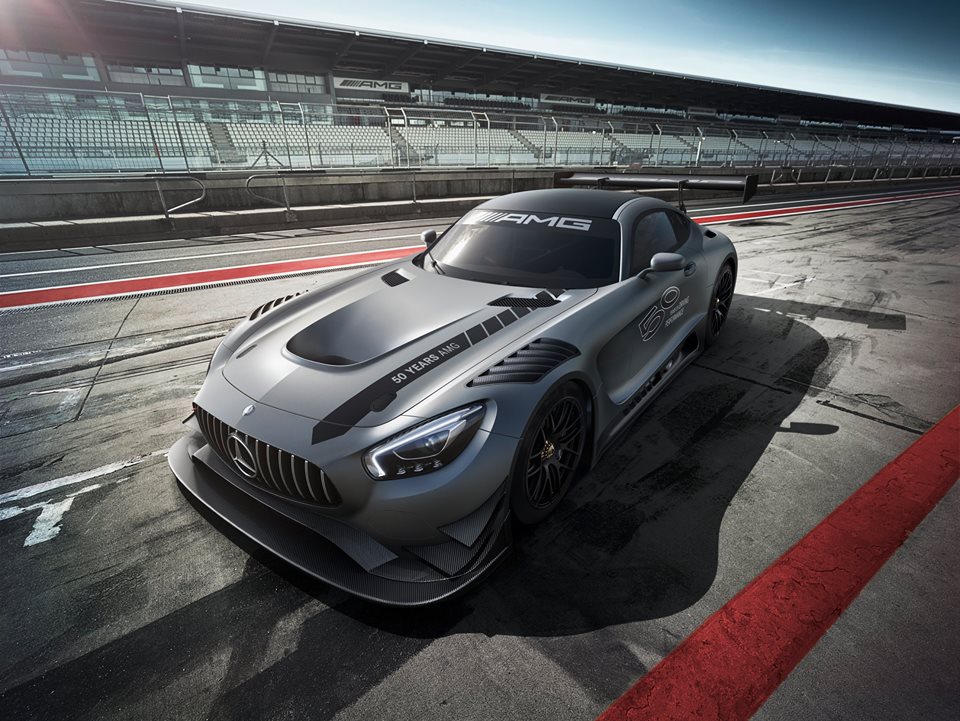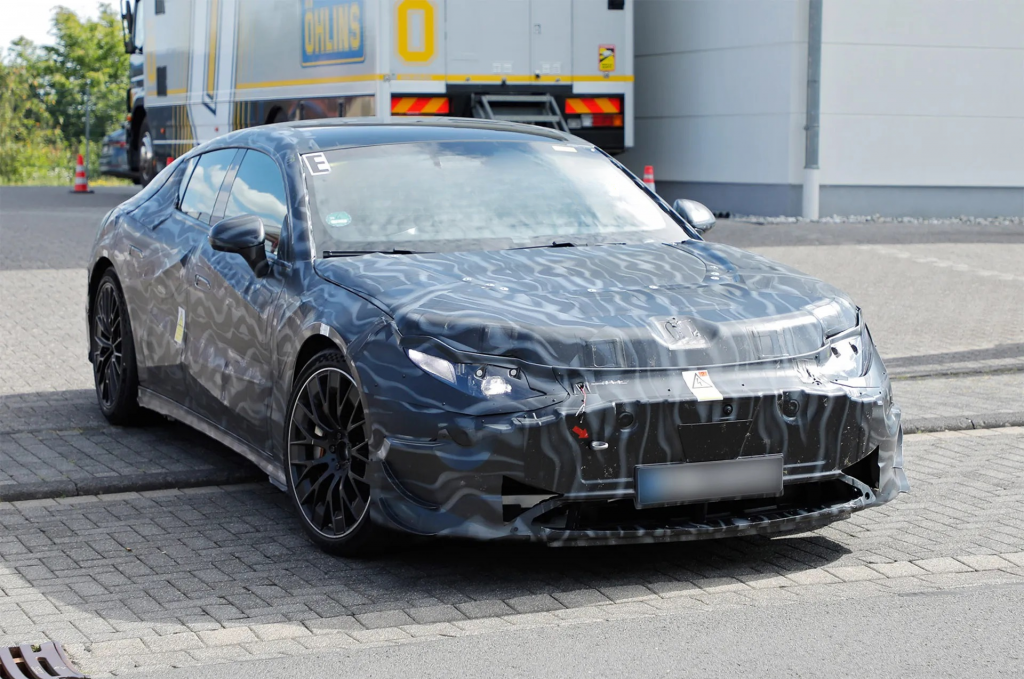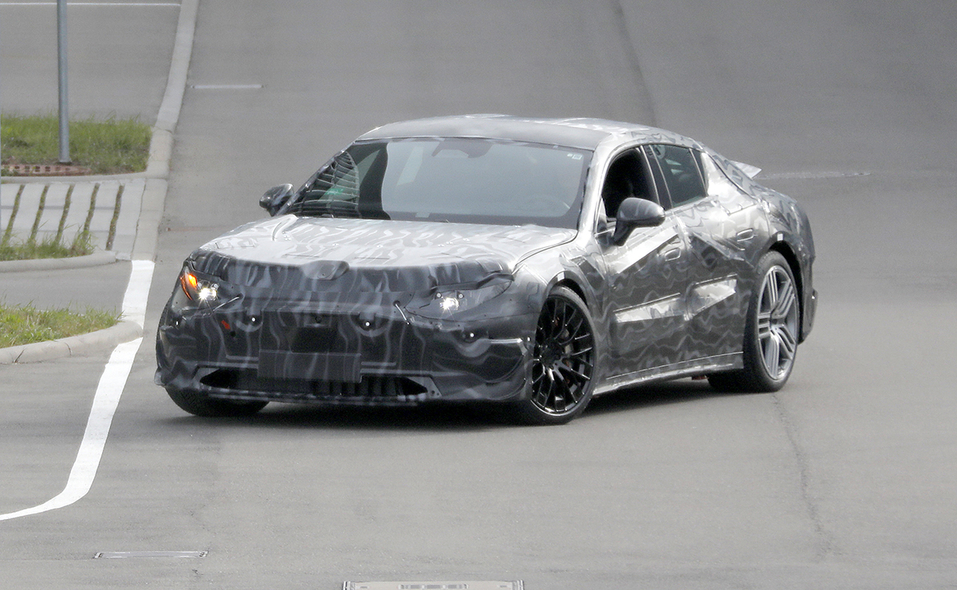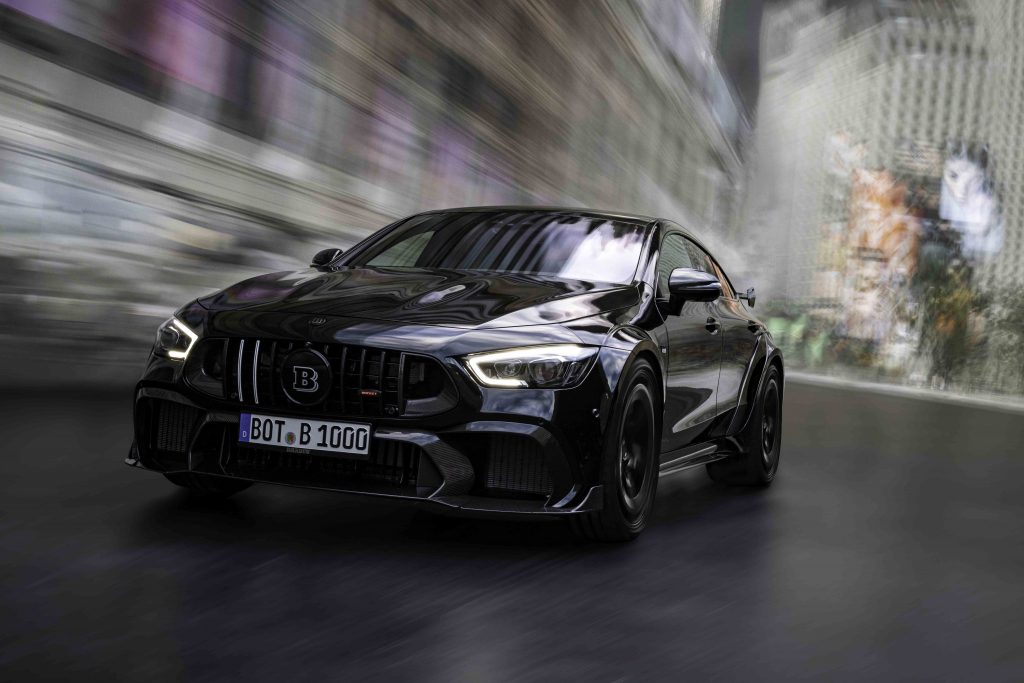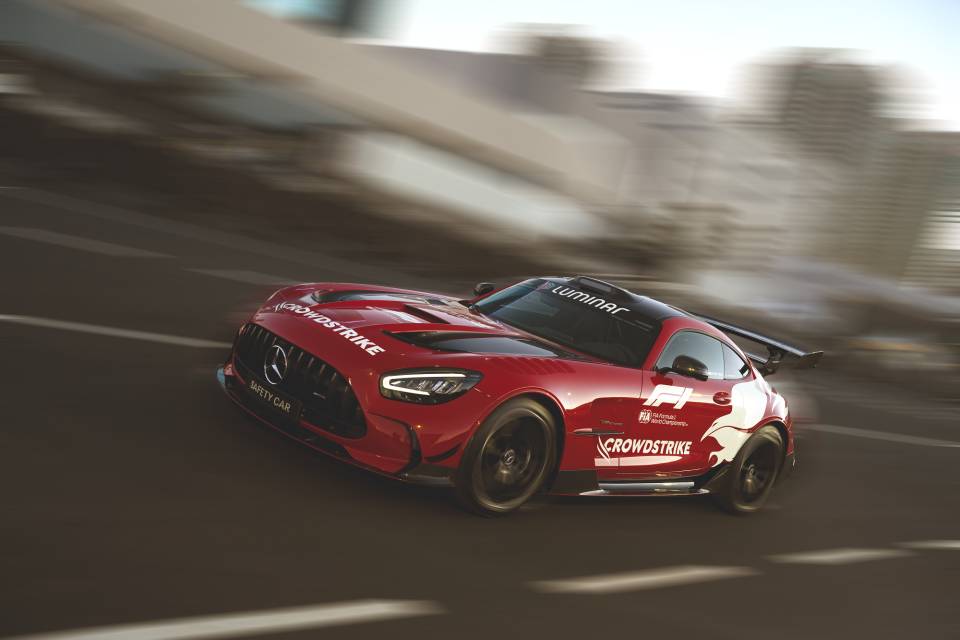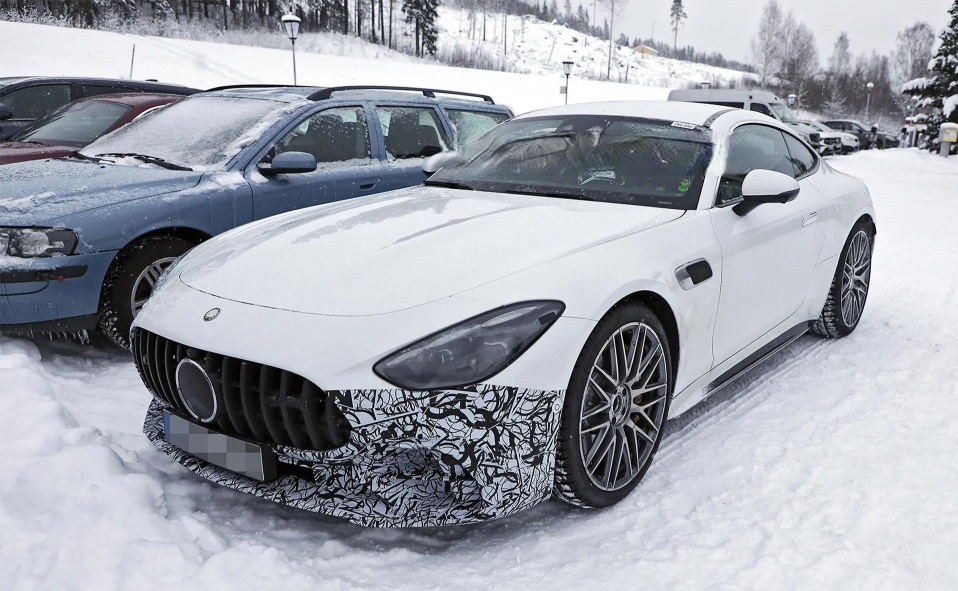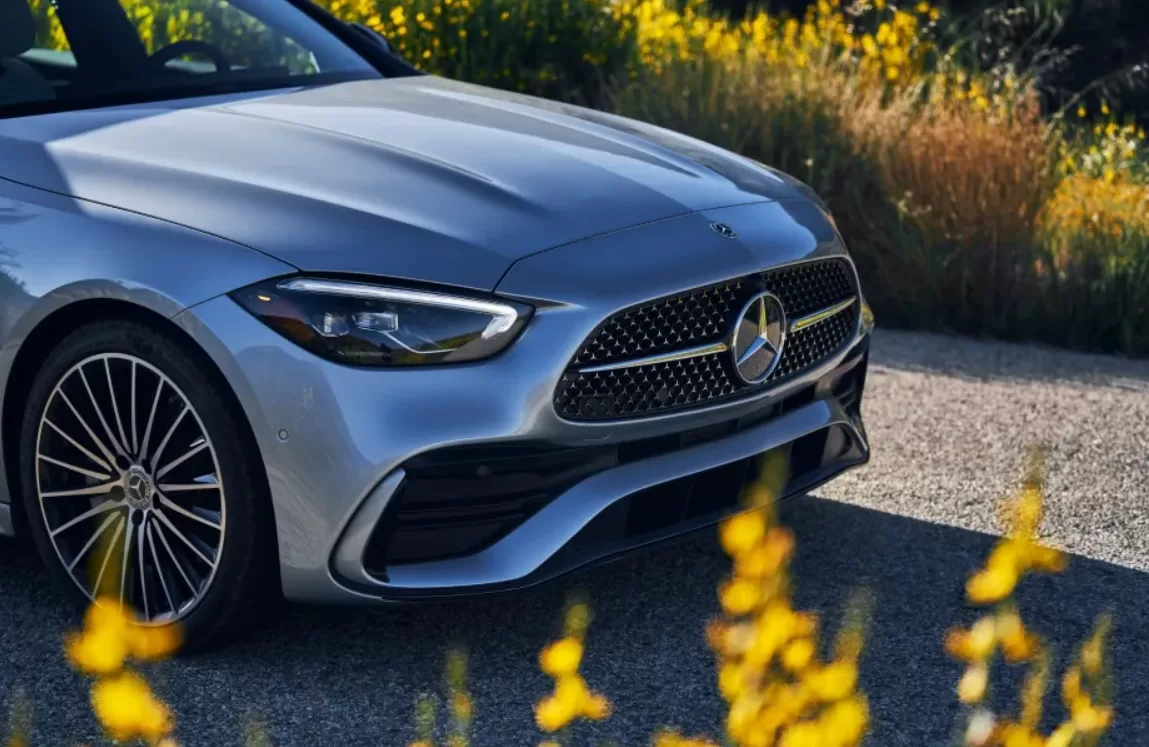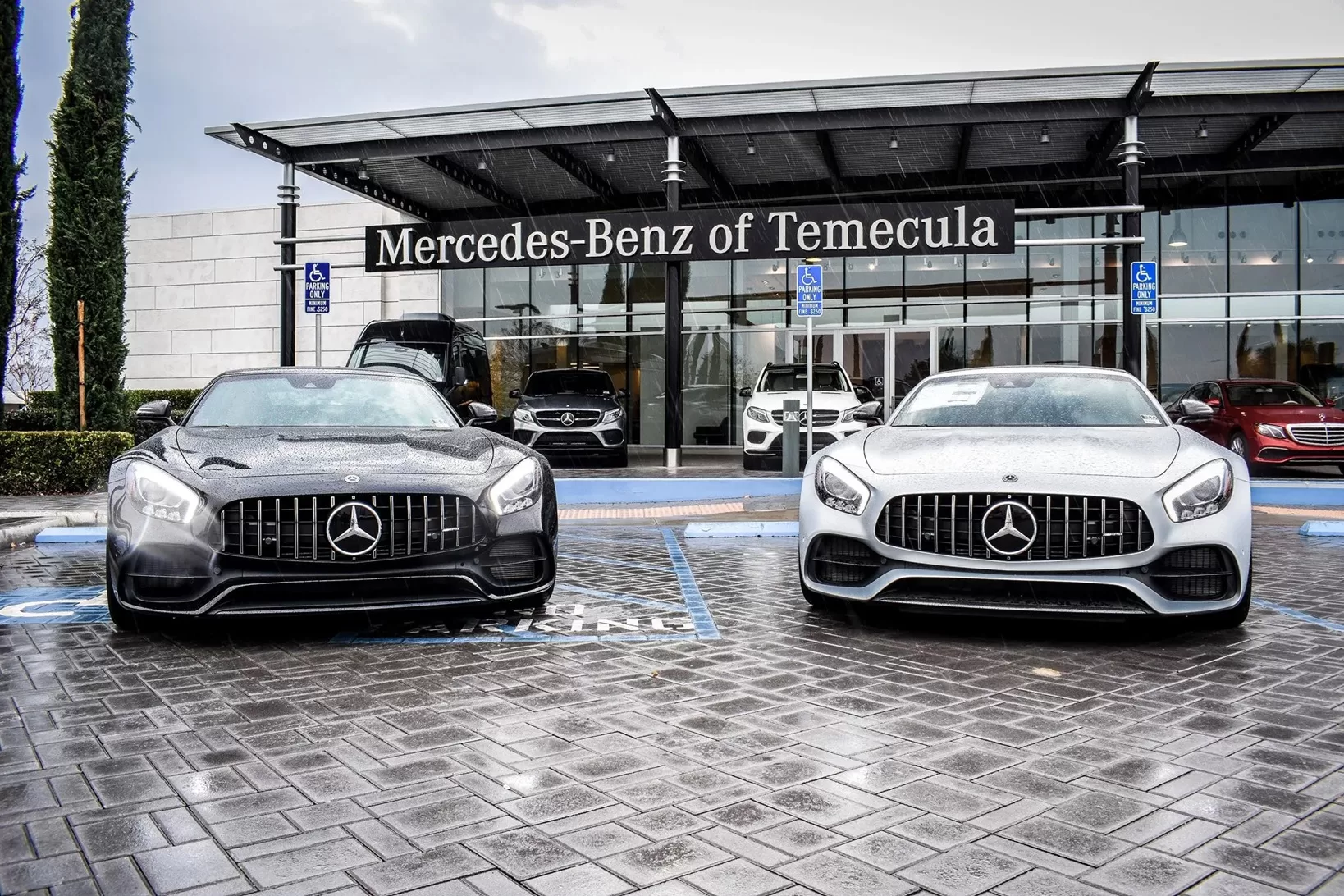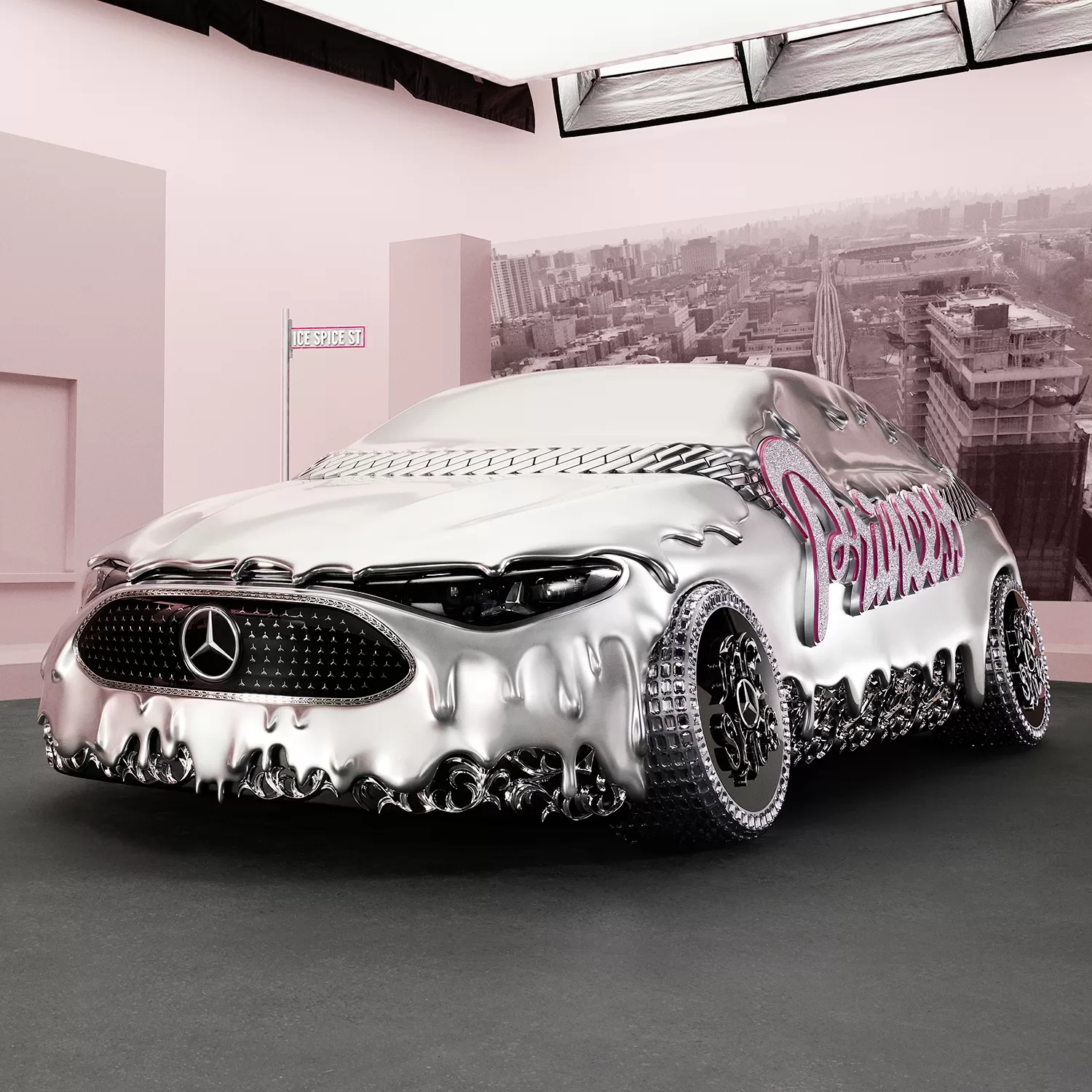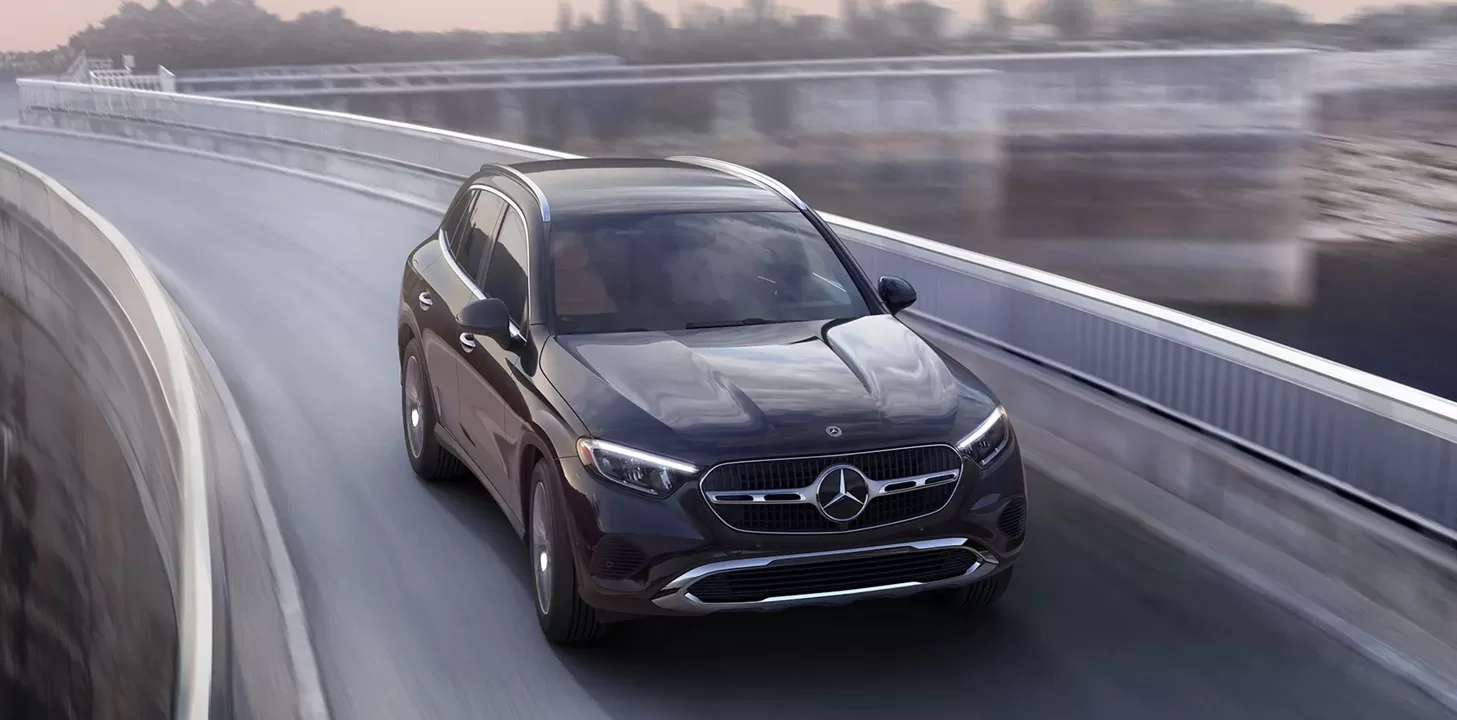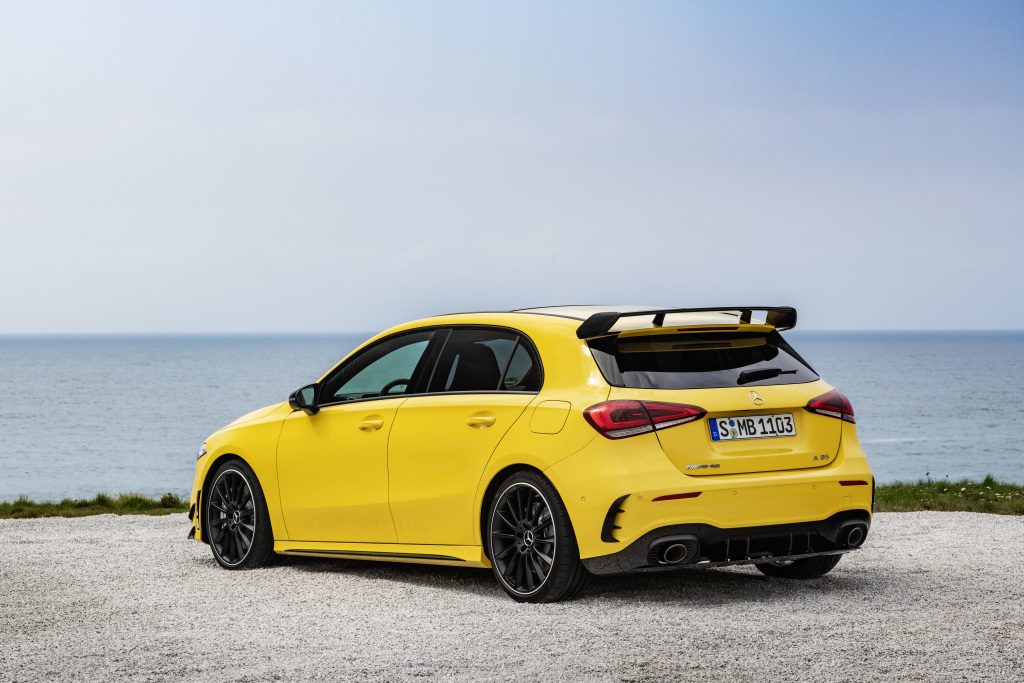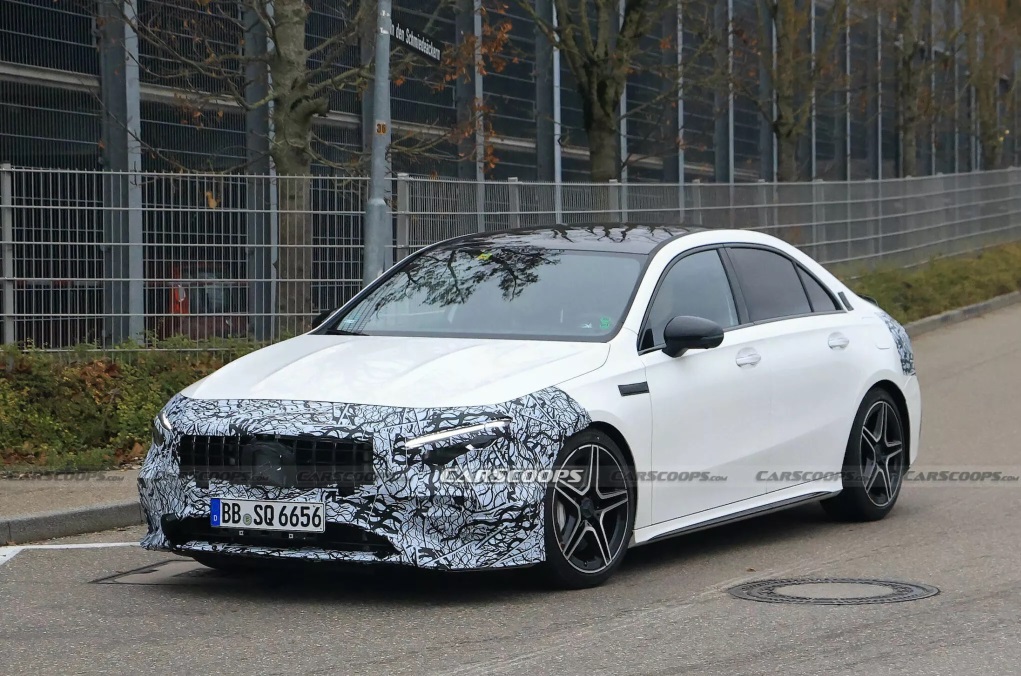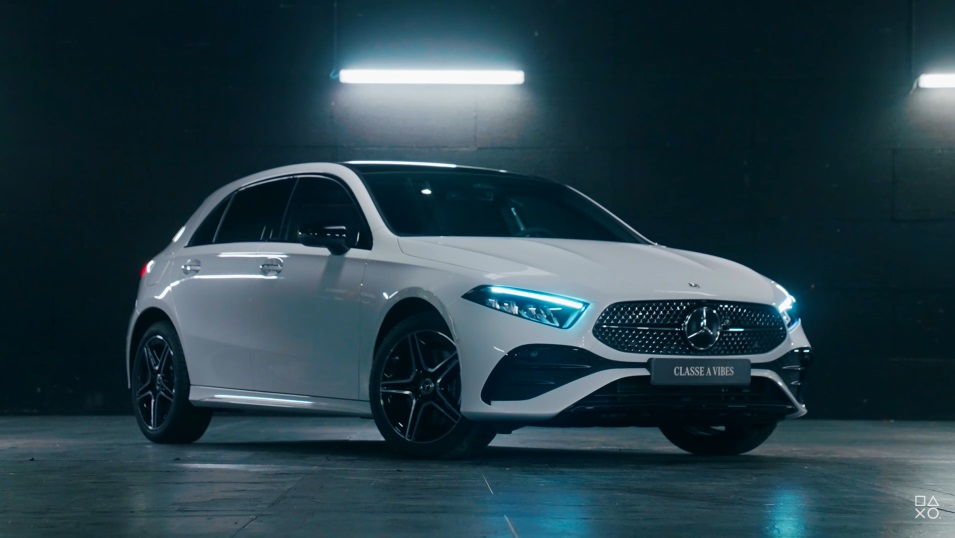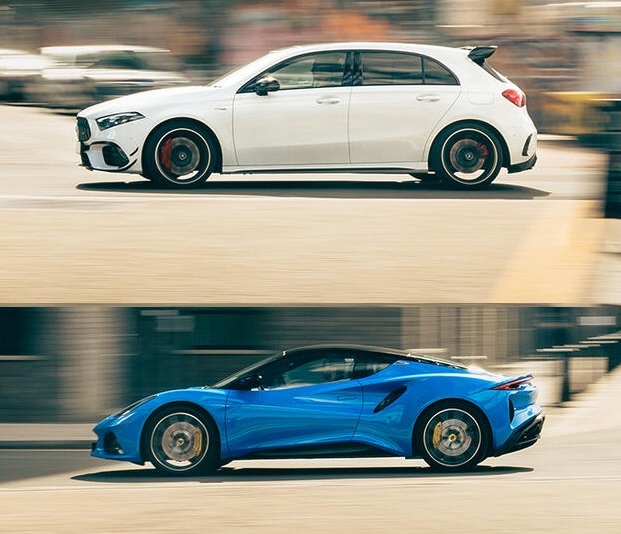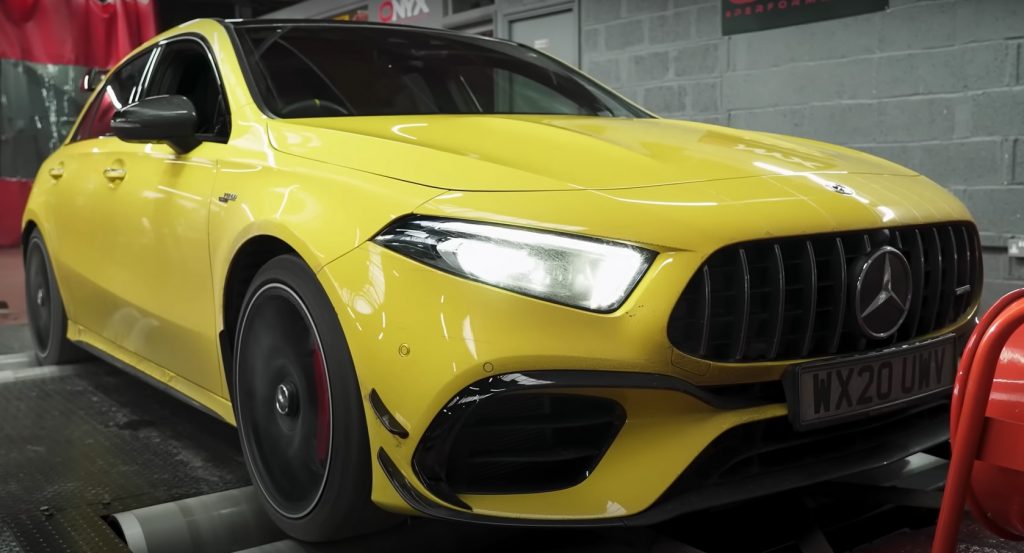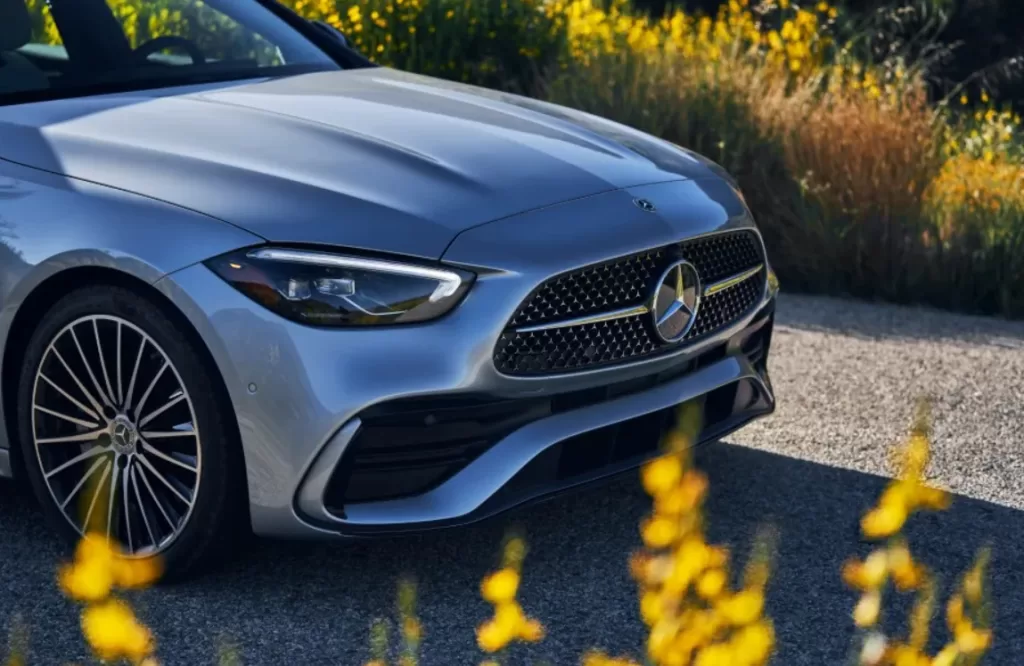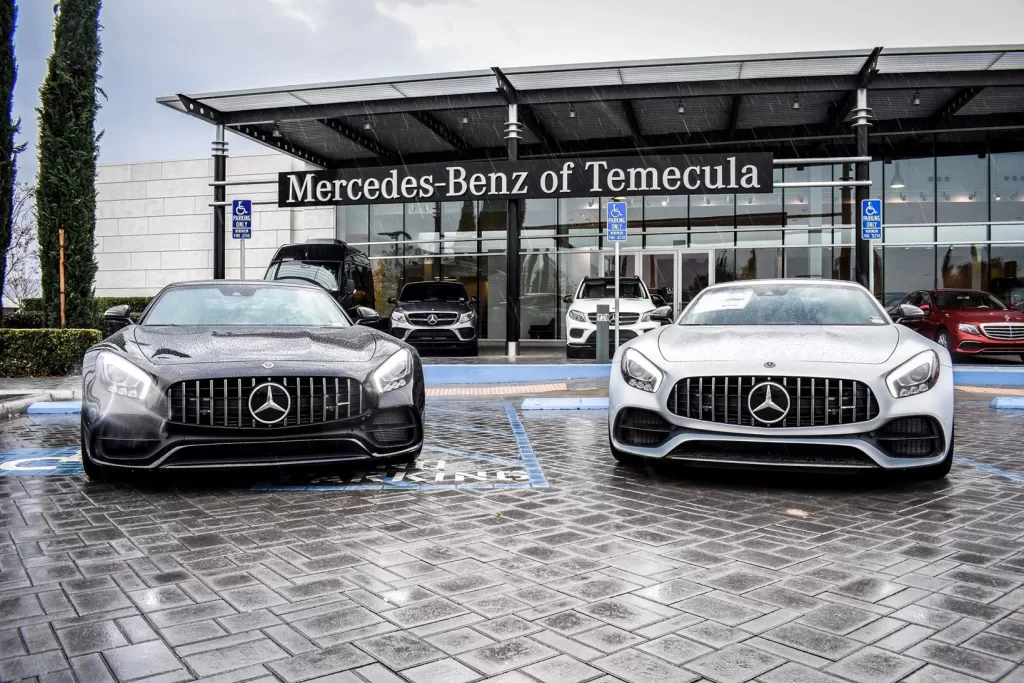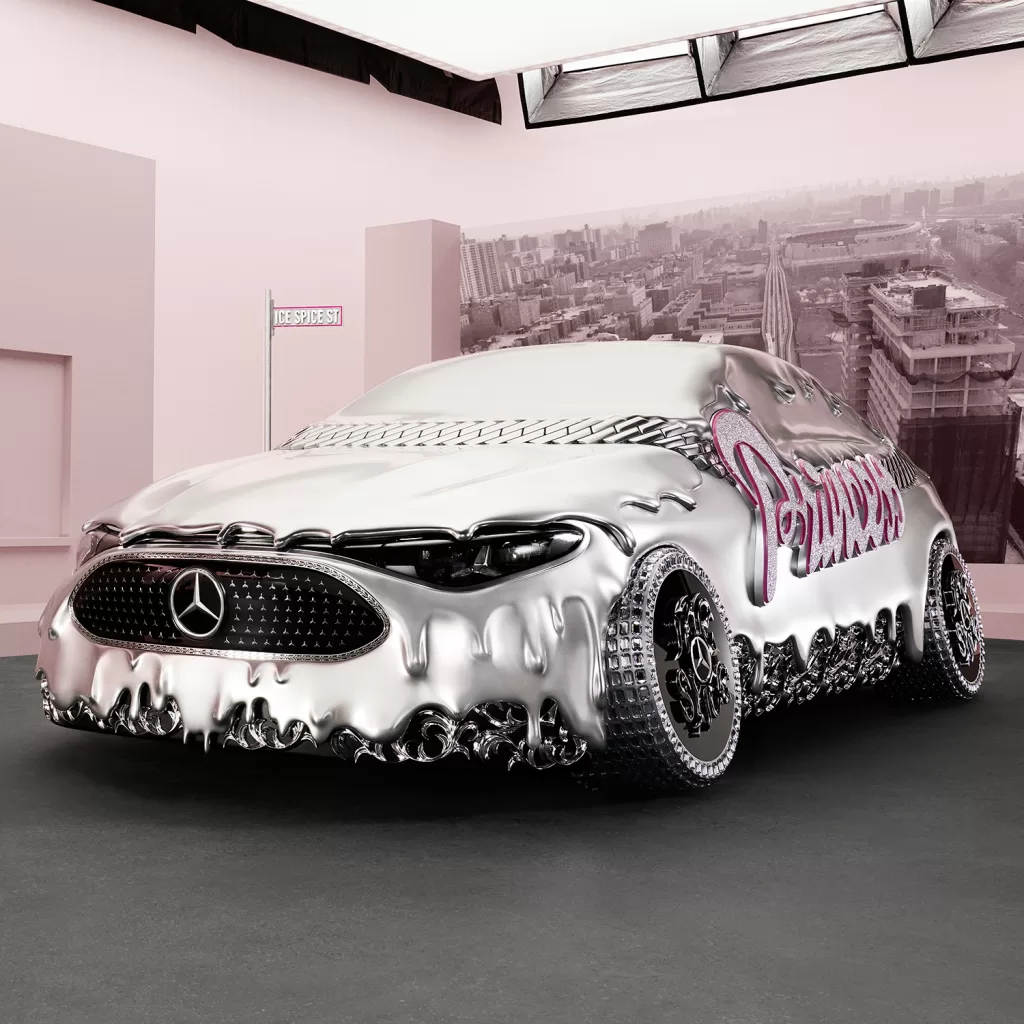In 1946, when production was resumed under difficult conditions after the end of the war, Mercedes-Benz fell back on proven engines from the prewar range. The first completely new designs to start production after the end of the war were the engines of the six-cylinder Mercedes-Benz 220 (W 187, 2.2-liter displacement, 80 hp/59 kW) and 300 (W 186, 3-liter displacement, 115 hp/85 kW) passenger cars.
The foremost attention-grabber at the 1951 Frankfurt International Motor Show (IAA), however, was the Mercedes-Benz 300. At the time of its presentation, this model was the largest and fastest production car of all the German brands. The output of the three-liter engine was increased several times from 1951: the 115 hp (85 kW) at 4600 rpm of the first W 186 I model was further advanced to 125 hp (92 kW) at 4500 rpm in the last version with the M 186 II engine. Output rose to 160 hp (118 kW) at 5300 rpm for the M 189 of the 300 d model. A similarly high-revving carburetor engine, the M 188, was fitted in the Mercedes-Benz 300 S (W 188 I) as early as 1951. This engine was replaced by the M 199 injection unit in 1955, which boosted engine output to 175 hp (129 kW) at 5400 rpm while fuel consumption remained unchanged.
Arrival of the Mercedes-Benz 300 SL
The Mercedes-Benz 300 SL sports car launched in 1954 was the world’s first production car whose four-stroke engine featured fuel injection – mechanically controlled direct injection via a Bosch six-plunger pump, to be precise. The M 198 engine developed 215 hp (158 kW) at 5800 rpm. With this engine design, Mercedes-Benz set the standards for the development of future generations of gasoline engines, just as it did with the entire sports car concept which was to become the icon of the century.
The Mercedes-Benz 220 SE (W 128) with the M 127 I six-cylinder in-line engine appeared in 1958. The 2.2-liter engine (115 hp/85 kW) had an injection system. This model finally brought the technology for increasing output, which had been established for many years already, into large-scale production.
Continuous development of the four- and six-cylinder engines
In the 1960s, in new model series such as for example the Tailfin, Mercedes-Benz focused on the continuous development of existing engines. The 190 (W 110) model was thus fitted with the latest version of the M 121 engine. In 1956, in the 190 model (W 121), it still developed 75 hp (55 kW) at 4600 rpm and consumed 11.5 liters of premium gasoline on 100 kilometers. At the same consumption, the output had now increased to 80 hp (59 kW) at 5000 rpm, and the top speed was approximately 150 km/h instead of 139 km/h. The design engineers obtained this optimization in spite of larger and heavier bodywork which had been designed along the lines of the latest findings in passive safety. The top-of-the-line model in this series was the 300 SE (W 112) presented at the IAA in 1961.
In the Mercedes-Benz 600 (W 100), the brand presented a V8 injection engine for passenger cars for the first time. From a 6.3-liter displacement, the oversquare eight-cylinder engine developed a maximum output of 250 hp at 4000 rpm. This engine also powered the Mercedes-Benz 300 SEL 6.3 (W 109 E 63), giving the sedan the performance of a sports car.
The M 100 also inspired the smaller V8 engines of the 1970s: the 3.5-liter M 116 engine was employed in the Mercedes-Benz 300 SEL 3.5 (W 109 E 35/1) and 280 SE/SEL 3.5 (W 108 E 35) models. The injection engine developed 200 hp (147 kW) at 5800 rpm. In addition, the M 117 engine with 4.5-liter displacement was developed, for the time being for export to North America.
Independent mid-series: The Stroke Eight
In the first independent model series of the mid-sized category (W 115/114), presented in 1968, Mercedes-Benz focused on proven engine technology. The 200 and 220 (W 115) and the 230 and 250 (W 114) models had in-line carburetor engines with overhead valves and an overhead camshaft. Development work was continued, and in April 1972, the 280 and 280 E models were added to the sedan model line-up. Both were equipped with a newly designed 2.8-liter engine with a double overhead camshaft. The carburetor version of this M 110 six-cylinder in-line engine developed 160 hp (118 kW) at 5500 rpm and as an injection engine 185 hp (136 kW) at 6000 rpm.
Three V8 engines in the S-Class
The Mercedes-Benz S-Class of the 116 series, presented in 1972, was offered with a total of three different V8 engines. The 280 S/SE served as entry-level model with the M 110 as carburetor or injection engine (160 hp/118 kW and 185 hp/136 kW, respectively). From the end of 1975, the injection system of the 2.8-liter, 3.5-liter and 4.5-liter engines was replaced by a more advanced version. In addition to the 3.5-liter V8 M 116 and the 4.5-liter M 117 engine originally designed for North America, the V8 M 100, which had proven itself in the Mercedes-Benz 600, was also used in the 116 series. With an increased displacement of just under 6.9 liters and developing 286 hp (210 kW) at 4250 rpm, it powered the top-of-the-line Mercedes-Benz 450 SEL 6.9 model.
The top-of-the-line models in the 107 series at this time were the Mercedes-Benz 500 SL roadster and the 500 SLC coupe of 1980. They were equipped with the M 117 V8 engine with a displacement of just under five liters, which had already been employed in a similar form in the 450 SLC 5.0 of 1978.
Launch of the 123 series with a new six-cylinder in-line engine
When Mercedes-Benz launched the new mid-sized 123 series in 1976, the proven gasoline engines of the 115/114 series were installed in the 200, 230, 280, and 280 E. Only the Mercedes-Benz 250 received a newly developed six-cylinder in-line engine, the M 123, with a 2.5-liter displacement and an output of 129 hp (95 kW) at 5500 rpm. In the course of the years, the engine range was modified, however, keeping pace with technical developments and the emission regulations stipulated in different markets.
V-engines for the W 126 S-Class
In 1979, Mercedes-Benz presented the new S-Class (W 126 series) with two revised eight-cylinder engines. The V8 engines of the predecessor series were replaced by engines with increased displacement and a light-alloy crankcase. The five-liter M 117 E 50 engine that replaced the 4.5-liter gray cast-iron engine had already been fitted in the 450 SLC 5.0. The engineers developed the 3.8-liter light-alloy M 116 E 38 engine based on the example of the five-liter engine from the veteran 3.5-liter V8 with a gray cast-iron block. Owing to their higher output at a lower weight, the new V8 engines allowed improved performance with greater fuel economy. Unchanged in the range were the carburetor version and the injection version of the 2.8-liter six-cylinder.
In 1985, Mercedes-Benz presented a completely revised S-Class line-up. Two newly designed six-cylinder engines replaced the proven M 110: instead of the carburetor model, a 2.6-liter injection engine (M 103 E 26) was now used, while the three-liter M 103 E 30 engine, developed in parallel, succeeded the injection variants of the M 110. Also new to the range was the 4.2-liter V8 M 116 E 42 engine which was created by enlarging the displacement of the 3.8-liter engine and now replaced the latter in the S-Class sedan, in the SEC coupe, and in the SL. The five-liter engine was now equipped with an electronic ignition system and the electronically and mechanically controlled Bosch KE-Jetronic injection system, and developed an output of 245 hp (180 kW) at 4750 rpm.
The most spectacular new unit in the engine range was the 5.6-liter eight-cylinder M 117 E 56. It was developed from the five-liter V8 by lengthening of the stroke and delivered 272 hp (200 kW) at 5000 rpm.
Renaissance of four-valve technology in the Mercedes-Benz 190
The Mercedes-Benz 190 (W 201), presented in 1982, was the brand’s first car in the compact class after the Second World War. At first, it was delivered with two engines from the M 102 engine family: the 190 model had a carburetor engine whose output, by reducing the size of the intake and exhaust ports and using a modified camshaft and smaller valves, was derated from 109 hp (80 kW) to 90 hp (66 kW). The 190 E, by contrast, acquired an engine with newly developed gasoline injection and developed 122 hp (90 kW).
In 1983, four-valve technology experienced a renaissance at Mercedes-Benz in this model series: the 190 E 2.3-16 model was a sporty variant of the compact-class sedan with excellent performance. From a 2.3-liter displacement, the engine developed 185 hp (136 kW) at 6200 rpm. This compact class car accelerated from standstill to 100 km/h in 7.5 seconds, the top speed was 230 km/h.
New six-cylinder in the 124 series
At the presentation of the new mid-sized 124 series in 1984, Mercedes-Benz also introduced new six-cylinder in-line engines. The six-cylinder in-line versions of the M 103 featured several innovations, among them just one camshaft to reduce frictional losses and weight.
In 1989, the 300 E-24 model was added to the 124 series. Its three-liter six-cylinder engine with four-valve technology debuted a few months earlier in the 300 SL-24. With a closed-look three-way catalytic converter, this engine with manifold injection developed 220 hp (162 kW) at 6400 rpm. At the Paris Motor Show in October 1990, Mercedes-Benz then presented the new top-of-the-line model in the model series, the 500 E. It had a five-liter V8 four-valve engine that developed 326 hp (240 kW) at 5700 rpm, which was based on the proven engine of the 500 SL.
In 1992, the engines for the mid-series were completely converted to four-valve technology. The new units were quieter, more refined, cleaner and more powerful than the previous two-valve engines. The 400 E appeared at the same time. This top-of-the-line model was fitted with the 4.2-liter V8 with four-valve technology used in the S-Class, and developed 278 hp (205 kW) at 5700 rpm.
Return of the 300 SL
In the SL family (R 107 series), Mercedes-Benz showed a completely revised model line-up at the 1985 IAA. After a 22-year interval, the company once again launched a sports car on the market with the magical model designation 300 SL. It was powered by the newly developed three-liter six-cylinder M 103 E 30 engine (188 hp/138 kW, 180 hp/132 kW with a catalytic converter). Also new to the range was a 4.2-liter V8 which was created by enlarging the displacement of the 3.8-liter engine, and which now replaced the latter in the SL, in the S-Class sedan, and in the SEC coupe. The five-liter engine was modified: it now had an electronic ignition system and the Bosch KE-Jetronic injection system. The most spectacular new unit in the engine range was a 5.6-liter V8 which was created by lengthening the stroke of the five-liter engine. However, the 560 SL was produced with a catalytic emission control system only for the export market. The engine developed 230 hp (170 kW) at 4750 rpm.
Innovations in four-valve technology
In 1989, in the new SL R 129 series, Mercedes-Benz presented the newly designed three-liter four-valve engine. The engine of the 300 SL-24 had been developed from the M 103; new features were the four-valve cylinder head and the map-controlled adjusting mechanism of the intake camshaft, which was being used for the first time by Mercedes-Benz. Along with higher compression and an electronic ignition system with anti-knock control, the four-valve M 104 developed 40 hp (29 kW) more output than the M 103 (190 hp/140 kW vs. 231 hp/170 kW). The five-liter V8 was equally equipped with four-valve technology. The 326-hp (240-kW) engine made the 500 SL the most powerful Mercedes-Benz production car.

